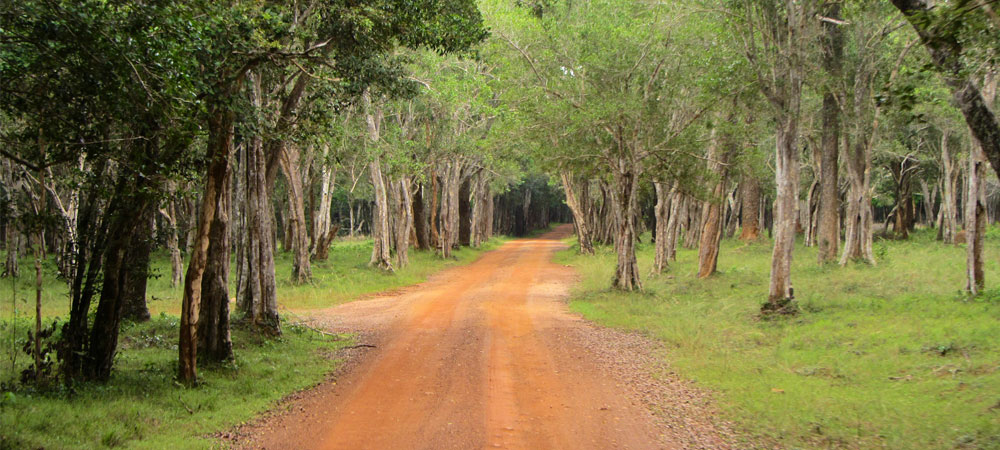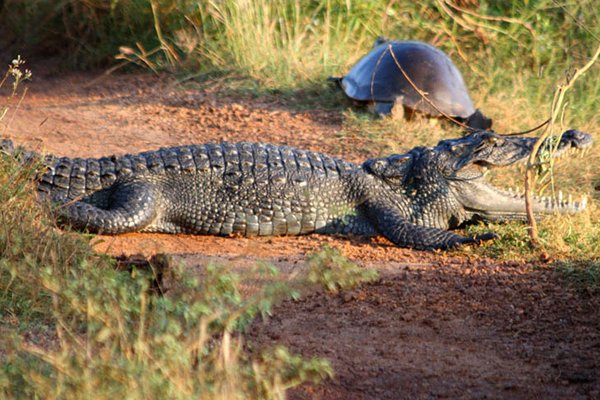
Wilpattu National Park is located 25km north of Puttalam or 30km west of Anurdhapura. The park that lies on
the northwest coast spans the border between North Central Province and North Western Province of Sri Lanka.
To the south of Wilpattu National Park is River Modergam Aru; to the north is River Kalay oya.
Wilpttu National park is among the oldest and most important of protected areas in Sri Lanka. It also
contains a number of important cultural sites. The sanctuary lies inland from the coast and is entirely
within Northern Province. It is contiguous with the park, the intervening boundary being marked by the
Moderagam Aru.


